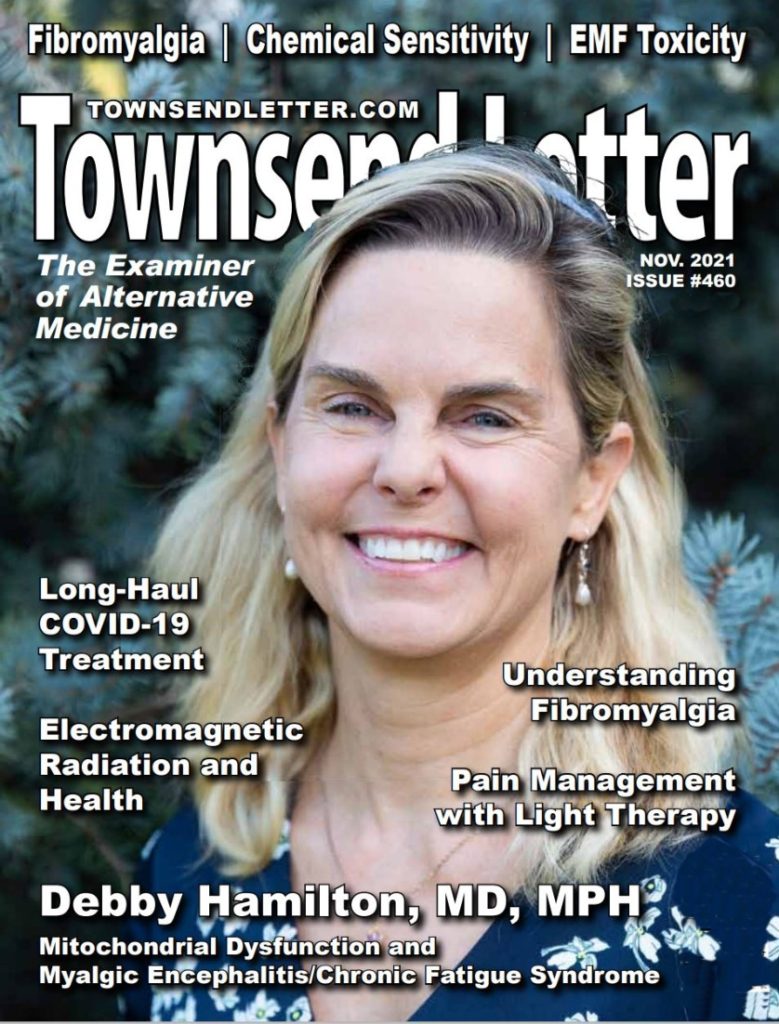
GERD: A Manganese Nutritional Deficiency by Alfred Zamm, MD
Of all the disorders that we face perhaps nothing is as uncomfortable and displeasing as heartburn. Not only does it oblige us to avoid eating all sorts of foods, but it obliges us to dose ourselves with antacids, prescribed and over-the-counter. Tums® is essentially harmless being calcium carbonate—indeed it is frequently suggested as a supplement for women diagnosed with osteoporosis—yet, it generally fails to ameliorate GERD (gastroesophageal reflux disease). Typically, most folks are using a type 2 histamine blocker like cimetidine or a proton pump inhibitor like omeprazole. The former doesn’t effectively relieve esophageal heartburn; the latter does but not without a significant downside of potential adverse effects for the sufferer. (Strangely enough both drugs can be repurposed effectively in certain cancer scenarios.) Still the bottom line is that individuals with GERD are bound to their medications to relieve reflux pain—otherwise, eating is sheer misery. Might there be another way to manage even reverse GERD entirely?
Alfred Zamm, MD, who has written on these pages over the past several years would say definitely, “yes.” Zamm has written in the Townsend Letter about the utility of selenium in the form of sodium selenite as a key nutrient to address heavy metal toxicity. In this 2021 booklet now available from Amazon, Zamm tells us about the uncanny way he came to discover how GERD is caused by a deficiency of the element manganese. Many supplement manufacturers do include manganese in their multi-vitamin-mineral formulas, but the dose is too low to address GERD. He conjectures that the sphincter separating the esophagus from the stomach fails to function normally due to a manganese deficiency. While Zamm does cite how manganese is involved in contraction of smooth muscle, he does not offer a clinical study substantiating the effectiveness of manganese in treating GERD. Nevertheless, his case study of reversing GERD with manganese is compelling and does deserve further research.
Zamm’s book does not discuss possible adverse effects of excessive manganese supplementation. A high level of manganese caused by environmental exposure or nutritional consumption may lead to neurotoxicity. Typically, a patient who has developed manganese toxicity experiences symptoms of Parkinson’s disease, cognitive dysfunction, or mood disorder. Additionally, high levels of manganese can cause cardiotoxic and hepatotoxic effects. Miners especially have been diagnosed with the condition known as manganism. Given the potential for adverse effects associated with excess manganese consumption, its use for treating GERD must be cautious to avoid toxicity.
Fibromyalgia’s Brain Connection by Carol McMakin
McMakin asks a simple question: “What’s involved in scratching our nose?” It doesn’t sound like much. You get an itch, it bothers you, so you give it a rub. But McMakin shows the process that takes only seconds involves many complicated brain processes. So, imagine if the discomfort is not just a nasal itch but ongoing pain throughout the body. While fibromyalgia pain involves similar brain centers and neurotransmitters, orchestrated control is lost particularly by the ill-placed production of a certain hormone produced by the hypothalamus.
Long-Haul COVID by Jacob Teitelbaum, MD
While the hospitals are getting swamped with patients succumbing to the delta variant, including not a few who are in such desperate straits that they require ICU care, integrative doctors are now taking on frontline care of the post-COVID patient. According to Jacob Teitelbaum, MD, symptoms are not terribly different from fibromyalgia: “fatigue, chills/sweats, body aches, headache, brain fog, gastrointestinal issues, trouble sleeping, and dizziness.” Missing from this list are two distinctive COVID-19 symptoms: loss of smell and taste. Teitelbaum states that 10% of individuals experiencing the virus will develop long-haul symptoms, estimated to be about 4 million people in the US. This surge of sick individuals will take up much of the care time of integrative and naturopathic doctors in the year ahead.
Those readers who are familiar with Teitelbaum’s work with fibromyalgia know about his S.H.I.N.E. protocol: Sleep, Hormone/Hypotension, Immunity, Nutrition, and Exercise. He details this in his earlier articles available on www.townsendletter.com as well as in his book, From Fatigued to Fantastic, which has been updated in a 4th edition this year published by Penguin/Avery. Teitelbaum is offering our readers treatment tools of the S.H.I.N.E. protocol by emailing him at FatigueDoc@gmail.com.
For the long-haulers Dr. Teitelbaum advises a first step eliminating inflammation and excess free radicals. Rather than using drugs, he advises nutritional supplementation. As discussed in our cover article, by Dr. Debby Hamilton, Teitelbaum emphasizes the need to nutritionally restore energetic production by the mitochondria. Jacob employs supplemental peptides as well as ginseng to achieve mitochondrial recovery. He also focuses on supporting cardiac, lung, and brain repair with appropriate supplementation.
Pain Management Without Drugs by Len Saputo, MD, and Jerry Stine
We are all sickened by the opioid crisis caused in no small part by physicians prescribing oxycodone and other medications. States, counties, cities, and individuals have been suing the pharmaceutical manufacturers seeking relief for the devastating consequences of drug addiction. Physicians were really sold a bill of goods when Purdue® Pharma promised that Oxycontin® would not lead to drug dependency. Of course, many MDs were richly rewarded through stipends offered for teaching practitioners about “good” opioid use at free dinner lectures. Wouldn’t it be nice if there really was an effective means to treat pain without using medication?
Len Saputo, MD, and Jerry Stine write in this issue about the use of light therapy, photobiomodulation (PBM). Infrared light is used to treat the painful area(s) in a session lasting minutes with no anesthesia. Typically, there is relief within 15 minutes of the session. There are no side effects, and the “before” and “after” can be monitored by using thermography. Saputo’s experience has revealed that patients suffering with severe pain from a diverse range of pathologies not only experienced relief with a brief number of treatments but were able to taper off their pain medications. Given that PBM offers so much benefit with essentially no risk, wouldn’t this be a physician’s first choice for pain management?
Cover Article: Myalgic Encephalitis/Chronic Fatigue Syndrome by Dr. Debby Hamilton
Of all the problems that I see in daily practice, fatigue is unquestionably the most common and concerning symptom. Fatigue is a symptom accompanying most infections, endocrine disorders, neurologic diseases, and cancers. But even without a diagnosed condition, fatigue is often the primary issue for patient and practitioner. The diagnosis of myalgic encephalitis or chronic fatigue syndrome requires that all diagnosable medical conditions have been ruled out. Nevertheless, the same mitochondrial dysfunction observed in ME/CFS can and does arise in diagnosed disorders. Hence, the functional diagnostic testing appropriate for evaluating ME/CFS should be employed in evaluating fatigue in all patients. Concurrently, patients suffering with chronic disease should be offered therapeutic supports useful in managing mitochondrial dysfunction.
How does one assess mitochondrial dysfunction? Dr. Debby Hamilton discusses five factors important in its assessment: cellular ATP availability, oxidative phosphorylation efficiency, ATP magnesium complexing capability, ADP mitochondrial transfer efficiency, and mitochondrial ATP cytosol transfer capacity. Of course, these evaluations are primarily limited to research settings. In clinical practice Dr. Hamilton employs urinary organic acid testing to uncover levels of Krebs Cycle metabolites characteristic of mitochondrial dysfunctioning. Assessment of oxidative stress is also important in understanding mitochondrial effectiveness. Markers of lipid peroxidation and DNA damage offer important clues to determine if mitochondrial dysfunction is improving or failing with therapy.
Hamilton discusses the need to employ tiered therapeutic strategies to improve mitochondrial functioning. She emphasizes that repair of mitochondrial membranes with phospholipids is an important first step. Supplying supplemental nutrients needed for mitochondrial activity is a necessary second approach. Provision of antioxidants is critical to allay mitochondrial disrepair.
Assessment of mitochondrial dysfunction and multi-tiered treatment offer the best chance of reversing fatigue in ME/CFS.
A Vaccine Worth Taking by Tina Kaczor, ND
No matter what your take on vaccines might be, it is important to remain open-minded about vaccination, their uses, pro and con. Perhaps there are good arguments against the COVID-19 vaccine—but one should recognize that there are also bad arguments against the COVID-19 vaccine and we should make vigorous efforts as physicians and scientists to deprecate such faulty reasoning. In this issue Dr. Tina Kaczor talks about an altogether different vaccine. One that has nothing to do with COVID. The vaccine that she discusses has demonstrated effectiveness in reducing the risk of dying from breast, prostate, and colorectal cancer. Despite the a priori objection of anti-vaxxers, this injection does not pose substantial adverse effects. We go to great lengths to work with our patients establishing changes in nutrition, exercise, and supplementation for the express purpose of decreasing the risk of developing cancer. However, such approaches remain hypothetical; we don’t have major studies substantiating that cancer risk and death from cancer are reduced. Kaczor’s article in this issue offers evidence for arguing to get the vaccine.
Our medical curmudgeon, Jacob Schor, ND, considers another infectious disease, not COVID-19, that has been well controlled through vaccination over the past two decades but has been having a resurgence due to the anti-vaxxer stance opposing vaccination for this infection. Researchers have shown that allowing a child to become infected with measles not only poses the risk of major systemic disease complications and/or death but also, for survivors, causes a bizarre loss of immunological memory. The track record of exposure causing infection and immune response to viruses, bacteria, molds, and parasites for which the immune system has developed some level of immunity is lost in the infant or youngster who experiences measles. Such an immune system “amnesia” is horrific and certainly should be considered by parents hesitant to have their child vaccinated for measles.
Dr. Schor’s tribute to Dr. Sandesh Khalsa, ND, who died in August is well worth the read.










